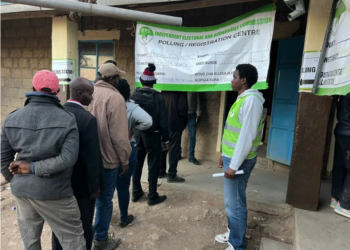Recent statistics reveal a staggering increase in job cuts within Kenya’s formal private sector, the alarm bells for the country’s economic stability and workforce welfare are ringing louder than ever.
Between October 2022 and November 2023, over 70,000 Kenyans lost their jobs, marking a significant setback for the country’s employment landscape. This distressing trend has been exacerbated by the ripple effects of the COVID-19 pandemic, which led to a sharp decline in private sector employment by 16.0%between March and April 2020.
The latest November Purchasing Managers’ Index (PMI) release paints a concerning picture, indicating a slight slowdown in private sector activity, with a slight drop in the headline index to 45.8 in November from 46.2 in October.
In response to this crisis, urgent and strategic actions are imperative to reverse this damaging trajectory. To effectively tackle the mounting job cuts in Kenya’s formal private sector, the government must prioritize policies aimed at fostering the growth of Small and Medium-sized Enterprises (SMEs).
SMEs constitute the backbone of Kenya’s economy, accounting for over 80.0% of all businesses in the country. Implementing measures such as tax breaks, low-interest loans, and grants tailored to SMEs can aid in their expansion, stimulating job creation.
Furthermore, directing investments towards sectors with substantial job creation potential stands as another pivotal strategy. The agricultural sector, for instance, has the capacity to generate millions of jobs. By investing in irrigation systems, offering subsidies to farmers, and enhancing access to credit facilities, the government can bolster productivity within this sector, translating into increased employment opportunities.
In conclusion, Kenya’s government must take immediate and decisive action to combat the escalating jobcuts in the formal private sector. Prioritizing policies that foster SME growth and strategically investing in job-intensive sectors will be pivotal in curbing the rising unemployment rate and improving the livelihoods of Kenyans.
The urgency of this situation cannot be overstated. A concerted effort from policymakers, industry stakeholders, and the broader society is paramount to reverse this trend and set Kenya’s economy back on track for sustainable growth and prosperity.


















